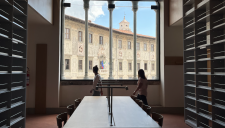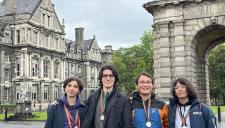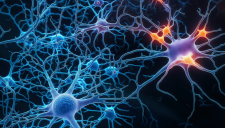How can we grow parts of the brain in a Petri dish starting from Embryonic Stem (ES) cells? A group of students of the PhD program in neuroscience and researchers working in the BioSNS Laboratory of Biology of the Scuola Normale recently gave an important contribution to this issue. ES cells spontaneously become nerve cells and, thanks to this innate property, different research teams have recently been able to reconstruct in vitro a number of different brain structures. However, the mechanisms acting in vitro and in an embryo to specify the identity of distinct nerve cells remain largely unknown. Thanks to a research carried out at the Laboratory of Biology BIO@SNS of the Scuola Normale, led by Scuola Normale scientist Federico Cremisi, key mechanisms regulating the formation of the nerve cells of retina and hypothalamus were identified. In a paper published in “Stem Cell Reports” journal, Michele Bertacchi and collaborators showed that ES cells acquire all the properties of cells of the cerebral cortex by default when cultured in a dish shielded from external chemical stimuli. However, exposure of ES cells to the proteins Activin or Sonic Hedgehog (Shh) during a very narrow time window of the culture causes cells to become retinal or hypothalamic neurons, respectively. This findings highlight the importance of studies in vitro for the comprehension of the mechanisms regulating the embryonic development and poses the bases for the generation of very specific types of nerve cells in vitro.
The research at the SNS Laboratory of NeuroBiology (BioSNS) follows two main directions: the main scientific focus will be on Neurobiology and Neurosciences (which remain an area of great strength and tradition at SNS), and the continuity with the past strong research record in visual neurosciences, is complemented and integrated by new scientific programs investigating the molecular and cellular basis of neural development and stem cell biology, neurodegeneration and ageing.
All the details can be found HERE.











